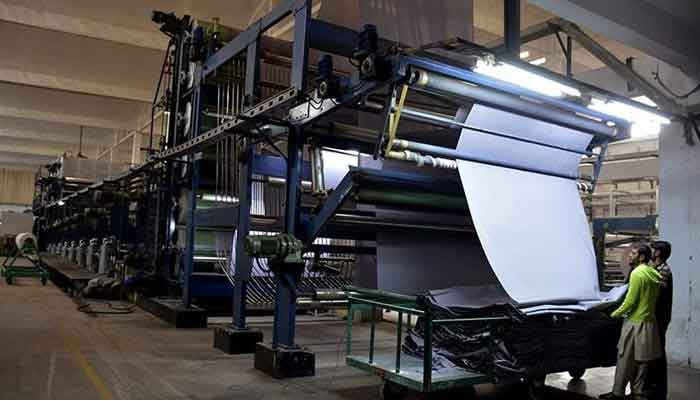- Textile exports plunge to $1.2 billion in February.
- Exports in first eight months of FY 2023 decreased by 11%.
- APTMA urges govt to seek concession from IMF for exporters.
KARACHI: Pakistan’s textile exports dropped for the fifth consecutive month in February, seeing a decline of 28% and landing at $1.2 billion as compared to the same month of the last fiscal year, The News reported Tuesday.
All Pakistan Textile Mills Association’s (APTMA) data showed a dismal picture of the exports of textile goods — the largest contributor in the overall export sector as well as the largest employment-generating sector of the economy.
The country’s textile exports in the first eight months of the current financial year decreased by 11% to stand at $11.24 billion, declining from $12.60 billion recorded in the corresponding months of the last financial year, said the APTMA.
The decline in textile exports comes at a time when the country is already facing depleting foreign exchange reserves, which are just $3.81 billion, hardly sufficient for less than a month of imports.
Last month, APTMA urged the federal government for a level playing field by implementing a uniform gas price of $7 per mmBtu for the export industry across the country.
It also warned that the decision of the government to suspend the regionally competitive energy tariff (RCET) of electricity for export-oriented units (EOUs) would hurt the textile industry, particularly in Punjab.
APTMA’s Secretary General Shahid Sattar in a letter to the government said that the textile industry has been asking for an electricity tariff of 9 cents despite the fact that the electricity cost, including transmission and distribution losses, stood at 8.1 cents per unit if cross-subsidies were excluded as per Central Power Purchasing Agency (CPPA) and National Electric Power Regulatory Authority (NEPRA) calculations.
The textile body wants the government to persuade the International Monetary Fund (IMF) to continue RCET for the exporters, particularly the textile sector, which was vital to make the products competitive in the international market.
“We have invested $5 billion in the textile sector over the last three years, and the textile sector surged to $19.5 billion in the financial year 2022 from $12.5 billion in FY2020,” Sattar said.
If the government succumbs to the IMF pressure, the robust growth of 55% in exports in FY22 and investment of $5 billion would go to waste, he pointed out.

 Latest News18 hours ago
Latest News18 hours ago
 Latest News18 hours ago
Latest News18 hours ago
 Latest News18 hours ago
Latest News18 hours ago
 Latest News18 hours ago
Latest News18 hours ago
 Latest News18 hours ago
Latest News18 hours ago
 Latest News18 hours ago
Latest News18 hours ago
 Latest News18 hours ago
Latest News18 hours ago
 Business18 hours ago
Business18 hours ago





















